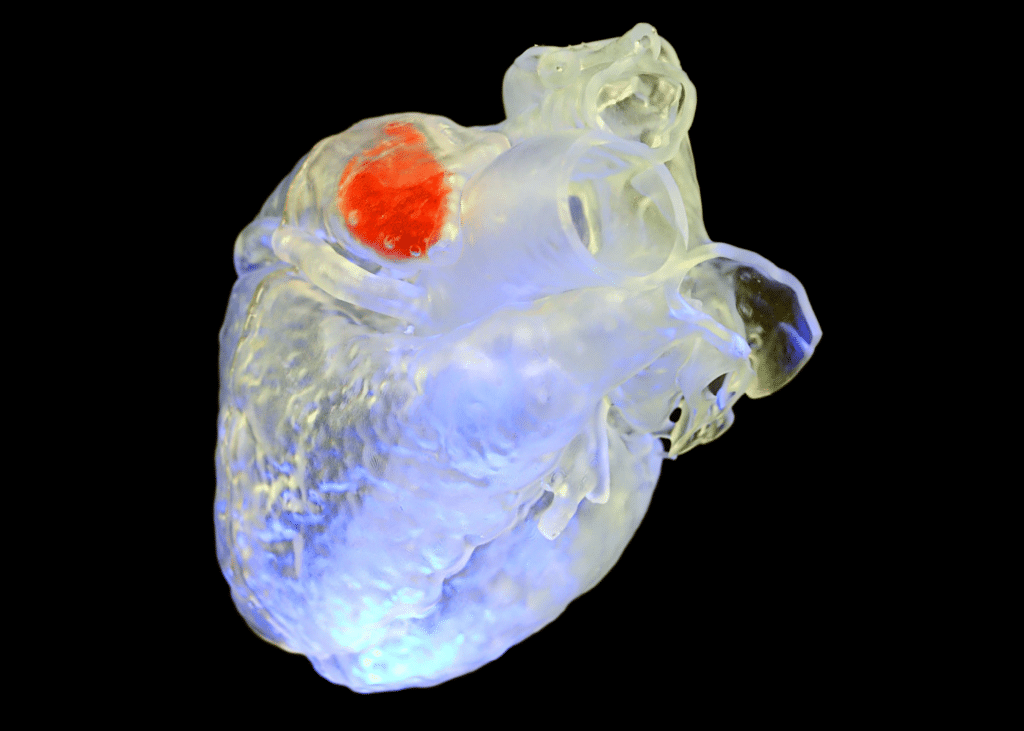Ultrasound-Based 3D Printing Technology Could Enable Surgery without Cutting Open Patient
Posted on 12 Dec 2023
The utilization of 3D-printing tools is expanding rapidly. From developing medical device prototypes and flexible electronics to engineering tissues for wound healing, the applications are diverse. Traditional 3D printing methods often involve slow, point-by-point building of the object on a robust printing platform. Over the past several years, researchers have made advances with photo-sensitive inks that quickly solidify when exposed to light, enhancing printing speed and quality. However, this method is limited by the need for transparent inks and is less effective for biomedical applications due to light's limited tissue penetration.
Now, engineers at Duke University (Durham, NC, USA) and Harvard Medical School (Boston, MA, USA) have made a significant leap forward by developing a biocompatible ink that solidifies into various 3D structures upon exposure to ultrasound waves. This new technique termed deep-penetrating acoustic volumetric printing (DVAP), enables the creation of biomedical structures deep within tissues, suitable for applications such as bone healing or heart valve repair. DVAP utilizes a specialized "sono-ink," comprising hydrogels, microparticles, and molecules designed to react specifically to ultrasound waves. When this sono-ink is introduced into the target area, an ultrasound printing probe emits focused sound waves that solidify the ink into detailed structures. These structures can vary significantly, from bone-like hexagonal scaffolds to hydrogel bubbles for organ application. The sono-ink's composition is adaptable, allowing for varying durability, degradability, or even color in the final product.

The team demonstrated DVAP's potential through three proof-of-concept experiments. In the first test, they successfully sealed a section of a goat’s heart, simulating a procedure for treating nonvalvular atrial fibrillation, which typically requires invasive surgery. The sono-ink was delivered to a goat heart’s left atrial appendage using a catheter in a printing chamber. The ultrasound probe then emitted waves through 12 mm of tissue, solidifying the ink without harming adjacent tissues, resulting in a flexible material capable of enduring heart-like movements. In a second experiment, they explored DVAP's capability for tissue reconstruction and regeneration. They created a bone defect in a chicken leg and injected the sono-ink, solidifying it through layers of skin and muscle tissue. The formed material seamlessly integrated with the bone, showing no adverse effects on nearby tissues.
Lastly, the team demonstrated DVAP's potential in therapeutic drug delivery. They infused a common chemotherapy drug into the sono-ink and delivered it to liver tissue samples. The ultrasound probe then solidified the ink into hydrogels, which gradually released the chemotherapy, diffusing it into the liver tissue. This groundbreaking approach by Duke and Harvard researchers demonstrates DVAP's vast potential in biomedical applications, offering a less invasive and more versatile alternative to traditional treatment methods.
“Because we can print through tissue, it allows for a lot of potential applications in surgery and therapy that traditionally involve very invasive and disruptive methods,” said Junjie Yao, associate professor of biomedical engineering at Duke. “This work opens up an exciting new avenue in the 3D printing world, and we’re excited to explore the potential of this tool together.”
Related Links:
Duke University
Harvard Medical School














